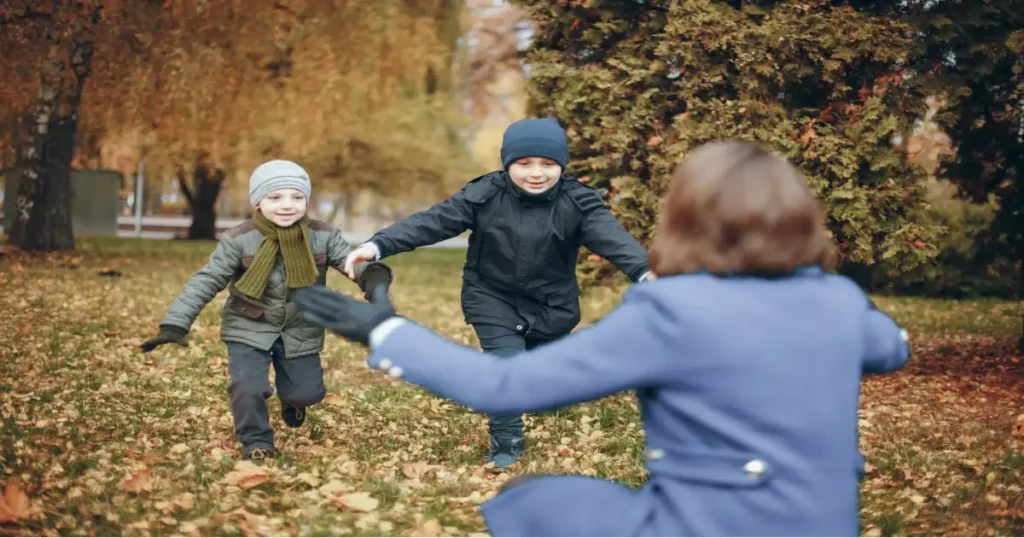Introduction
Children often struggle to regulate their emotions and behaviors, making it essential to provide effective behavioral aid activities for children. These activities are designed to support children in building self-discipline, emotional regulation, and social skills. Whether children are experiencing behavioral issues due to developmental challenges, trauma, or environmental factors, behavioral aid activities play a crucial role in helping them develop healthy coping strategies.
In this article, we will explore evidence-based techniques, practical strategies, and fun activities that parents, caregivers, and teachers can use to help children improve their behavior. From mindfulness exercises to social skill-building games, this guide covers everything you need to know about supporting children through behavioral aid activities.
Understanding the Need for Behavioral Aid Activities for Children
Children can display challenging behaviors such as aggression, defiance, or withdrawal due to various reasons—emotional struggles, developmental conditions, or stressful life events. It’s critical to recognize that behavioral aid activities for children are not just about managing disruptive behaviors but also fostering emotional well-being and mental health.
Effective behavioral aid activities focus on building skills such as:
- Emotional awareness
- Problem-solving
- Conflict resolution
- Patience and tolerance
- Social interaction
By understanding the root causes of behavioral issues, adults can tailor activities to meet the specific needs of the child and create a supportive environment for growth.
Top Behavioral Aid Activities for Children
1. Mindfulness Exercises
Mindfulness teaches children to stay present, improving their emotional regulation. Breathing exercises, body scans, and mindful coloring activities can help reduce impulsive behavior. Children who engage in mindfulness activities often demonstrate better concentration, patience, and emotional resilience.
Example:
- Deep Breathing: Teach children to inhale deeply through their nose, hold for a few seconds, and slowly exhale. This calms their nervous system.
2. Emotional Regulation Games
These activities help children label their emotions, understand triggers, and respond calmly. Emotion cards, journaling exercises, and storytelling are excellent ways to build emotional intelligence.
Activity Idea:
- Emotion Matching Cards: Children match facial expressions with the correct emotion. This game encourages them to recognize how they and others feel.
3. Role-Playing and Social Skill Games
Role-playing games are effective behavioral aids that teach children how to interact appropriately in social settings. Children practice empathy, turn-taking, and communication through pretend play.
Example:
- Role-Playing Conflict Scenarios: Simulate real-life situations like disagreements with friends. Guide the children in finding peaceful solutions.
4. Physical Activity for Emotional Release
Physical activities like yoga, dance, or outdoor games provide children with an outlet to release pent-up energy. Exercise reduces stress and increases the release of endorphins, promoting emotional well-being.
Activity Example:
- Animal Yoga: Kids can mimic animal poses, like a “cat” or “cobra,” while focusing on slow breathing to calm their mind.
5. Art and Music Therapy
Creative activities such as drawing, painting, and music therapy allow children to express emotions that they may struggle to articulate verbally. These activities also encourage self-reflection and stress relief.
Example:
- Feelings Through Art: Ask children to draw pictures of their emotions. This encourages them to explore and discuss their feelings in a non-judgmental way.

6. Positive Reinforcement Systems
Positive reinforcement encourages children to develop good behavior by rewarding their efforts. Use sticker charts, tokens, or praise to recognize their achievements and motivate them to continue positive behaviors.
Example:
- Token Economy System: Create a chart where children earn tokens for good behavior. They can trade their tokens for rewards after they have accumulated enough.
How to Implement Behavioral Aid Activities Effectively
- Consistency is Key: Repetition helps children internalize positive behaviors. Use the same activities regularly to build habits.
- Personalization: Tailor activities based on the child’s needs and preferences. This increases engagement and effectiveness.
- Positive Reinforcement: Focus on encouraging desired behavior rather than punishing undesirable actions.
- Patience and Empathy: Behavioral changes take time. Approach the process with patience and empathy, acknowledging small progress.
- Collaboration with Teachers and Therapists: Work closely with educators and mental health professionals to create a holistic support system for the child.
The Importance of Early Intervention in Behavioral Aid Activities for Children
Early intervention plays a critical role in shaping a child’s behavioral and emotional development. Identifying behavioral challenges at an early stage allows parents, teachers, and caregivers to introduce behavioral aid activities for children when they are most effective. Addressing behavioral issues promptly can prevent more severe problems in the future and ensure children develop healthy coping strategies. This section explores why early intervention matters, how it impacts children’s development, and the key steps involved in implementing it effectively.
1. Preventing the Escalation of Behavioral Issues
One of the most significant benefits of early intervention is the prevention of behavioral challenges from escalating into more serious conditions. If disruptive behaviors such as aggression, defiance, or social withdrawal are left unaddressed, they can interfere with a child’s ability to succeed in school, build friendships, or engage in family life.
Introducing behavioral aid activities for children early allows caregivers to guide children toward positive behavior patterns, reducing the likelihood of long-term emotional or social difficulties. Early intervention teaches children self-regulation and problem-solving skills before negative behaviors become ingrained habits.
2. Enhancing Emotional Intelligence and Social Skills
Developing emotional intelligence and social skills is crucial for a child’s personal and academic success. Emotional intelligence helps children understand and manage their emotions, while social skills enable them to build healthy relationships and interact positively with others. Implementing behavioral aid activities for children can significantly enhance these areas by offering them the tools and experiences needed to thrive emotionally and socially. In this section, we will explore the importance of emotional intelligence, effective ways to boost social skills, and how specific behavioral aid activities foster both aspects.
The Importance of Emotional Intelligence in Children
The ability to recognize, comprehend, and control one’s own emotions as well as to understand and sympathize with those of others is known as emotional intelligence.It is a critical life skill that helps children handle frustration, resolve conflicts, and maintain a positive attitude.
Without emotional intelligence, children may struggle with impulsive behaviors, tantrums, or withdrawal in social situations. By integrating behavioral aid activities for children, caregivers can help them develop emotional regulation skills, ensuring they respond appropriately to various situations. Activities such as emotional journaling, guided breathing, and role-playing provide opportunities to practice managing emotions and gain better self-awareness.
How Behavioral Aid Activities Foster Emotional Intelligence
Behavioral aid activities for children introduce strategies that teach them how to interpret their emotions and react constructively. Here are some activities that promote emotional intelligence:
- Emotion Identification Games: These games use flashcards or facial expressions to help children recognize different emotions, encouraging them to label their own feelings accurately.
- Mindfulness Exercises: Practices like breathing exercises and body scans help children focus on their emotions and calm their minds, teaching them how to manage stress and frustration.
- Storytelling and Empathy Exercises: Through storytelling or reading books with emotional themes, children learn to understand others’ emotions and build empathy. These activities encourage discussions about feelings, deepening their emotional insight.
When children regularly engage in such activities, they develop strong emotional intelligence, allowing them to handle social challenges with greater ease.
Developing Social Skills through Behavioral Aid Activities
Social skills are essential for children to interact effectively with peers, family members, and teachers. Children with well-developed social skills tend to make friends easily, cooperate in group settings, and handle conflicts maturely. However, social skills do not come naturally to all children, especially those with behavioral challenges or developmental delays. This is where behavioral aid activities for children play a vital role.
Behavioral activities provide structured environments where children can practice interpersonal skills in a safe and supportive setting. Role-playing scenarios, cooperative games, and group projects are effective tools to build skills such as turn-taking, active listening, and sharing. These activities teach children how to respect boundaries, express their needs politely, and resolve conflicts without aggression.
Key Social Skills to Develop Using Behavioral Aid Activities
- Active Listening: Encouraging children to engage in conversations where they listen attentively helps them become better communicators. Behavioral activities such as group discussions and storytelling sessions reinforce this skill.
- Sharing and Cooperation: Games that require children to share toys or complete tasks collaboratively promote teamwork and mutual respect. These experiences teach children to value cooperation and compromise.
- Conflict Resolution: Practicing conflict resolution through behavioral aid activities for children equips them with problem-solving strategies. Children learn how to express their feelings assertively and seek peaceful solutions to disagreements.
- Non-Verbal Communication: Children also need to understand body language, facial expressions, and gestures. Activities like charades help them recognize and interpret non-verbal cues, enhancing their ability to connect with others.
Integrating Emotional Intelligence and Social Skills through Play
Play-based activities are particularly effective in developing both emotional intelligence and social skills. Interactive games, role-playing, and group challenges provide children with hands-on experiences that promote learning in an engaging way. Through behavioral aid activities for children, they can explore emotions and practice social interactions in real-time scenarios.
For instance:
- Pretend Play: This allows children to assume different roles and practice social behavior in imaginative contexts. Whether they are playing “teacher and student” or acting out family situations, they learn how to respond appropriately to various social roles.
- Group Challenges: Games like scavenger hunts or building projects require teamwork, which helps children learn collaboration and communication. These activities also foster emotional regulation, as children must manage excitement and frustration during gameplay.
When emotional intelligence and social skills are developed through enjoyable activities, children are more likely to internalize these lessons, applying them in real-life situations with confidence.
The Long-Term Impact of Behavioral Aid Activities on Emotional and Social Development
Engaging children in behavioral aid activities during their formative years not only enhances emotional intelligence and social skills in the short term but also lays the foundation for lifelong success. Children with strong emotional and social abilities are better equipped to:
- Build meaningful friendships and maintain positive relationships.
- Navigate challenges in school, such as group projects and peer interactions.
- Develop resilience to cope with setbacks and emotional hardships.
Over time, these children become adults who excel in professional and personal relationships, demonstrating empathy, communication skills, and emotional stability. Behavioral aid activities for children provide the essential building blocks for these outcomes, ensuring that children grow into well-rounded, emotionally intelligent individuals.
3. Building Resilience and Coping Mechanisms
Resilience is the ability to recover from setbacks and adapt to challenges, which is essential for emotional well-being. Behavioral aid activities for children introduced during early intervention teach coping mechanisms that help children handle stress and anxiety more effectively.
Children exposed to early behavioral support develop the tools they need to face life’s ups and downs with confidence. Activities like mindfulness exercises and physical games encourage children to manage emotions and channel energy positively. This foundation builds long-term resilience, reducing the chances of mental health issues developing later in life.
4. Promoting Academic Success
Behavioral issues can significantly impact a child’s performance in school. Disruptive behaviors may lead to difficulties in focusing, following instructions, or interacting with teachers and peers. Early intervention through behavioral aid activities for children helps children develop self-discipline and concentration, which are essential for academic success.
Children who receive timely support through behavioral activities are more likely to stay engaged in learning and perform well in the classroom. Schools that integrate these activities into their curriculum create a positive environment where children feel supported both academically and emotionally.
5. Strengthening Family Relationships
Behavioral challenges can create tension within families, leading to conflicts between children and caregivers. Early intervention strengthens family bonds by fostering positive interactions and reducing frustration. Parents and caregivers who engage in behavioral aid activities for children with their little ones learn new ways to connect and communicate effectively.
Involving the whole family in behavioral activities creates a collaborative environment where children feel supported. Family activities such as cooperative games or joint mindfulness sessions promote trust and understanding, helping children feel more secure in their relationships.
6. Reducing the Need for Intensive Interventions
Early behavioral support reduces the need for more intensive interventions later in life. If behavioral issues are not addressed early, they may require complex solutions such as therapy, special education programs, or behavioral modification plans in adolescence or adulthood.
Behavioral aid activities for children introduced early ensure that children receive proactive support, minimizing the chances of future behavioral crises. These activities serve as preventive measures, creating a smoother developmental path for children as they grow.
7. Collaborative Approach: Parents, Teachers, and Professionals
Effective early intervention requires collaboration between parents, teachers, and mental health professionals. A coordinated effort ensures that behavioral aid activities for children are applied consistently across different environments, such as home, school, and therapy settings.
For example, a teacher can recommend specific activities to address attention issues in class, while a therapist can suggest mindfulness exercises for emotional regulation at home. When caregivers, educators, and professionals work together, children receive comprehensive behavioral support, leading to better outcomes.
8. Cultivating Lifelong Positive Habits
The habits children form during their early years tend to stay with them throughout life. Introducing behavioral aid activities for children at a young age promotes the development of healthy behavior patterns, such as self-discipline, empathy, and cooperation. These positive habits lay the groundwork for future success in personal relationships, academic settings, and professional environments.
By starting behavioral aid activities early, caregivers can help children cultivate habits that will benefit them well into adulthood, creating emotionally intelligent and socially capable individuals.
Conclusion: The Lasting Impact of Early Behavioral Aid Activities
Early intervention through behavioral aid activities for children is essential for fostering emotional well-being, social competence, and academic success. It helps prevent the escalation of behavioral challenges, promotes positive habits, and strengthens relationships between children, families, and educators.
Children who engage in behavioral aid activities early are more likely to develop resilience, emotional intelligence, and coping skills that support their overall growth. By providing timely support, caregivers can ensure children navigate life’s challenges with confidence, creating a strong foundation for future success
FAQs: Behavioral Aid Activities for Children
1. What Are Behavioral Aid Activities for Children?
Behavioral aid activities for children are structured exercises, games, or strategies designed to promote positive behavior, emotional development, and social skills. These activities help children learn how to manage their emotions, resolve conflicts, improve self-regulation, and develop essential interpersonal skills. Incorporating behavioral aid activities for children supports growth by addressing challenges like impulsiveness, aggression, or difficulty in making friends. Activities such as role-playing, emotion identification games, and group challenges foster emotional intelligence and encourage healthy social interactions.
2. Why Are Behavioral Aid Activities Important for Emotional Development?
The importance of behavioral aid activities for children lies in how they enhance emotional intelligence. Children develop the ability to recognize, understand, and regulate their emotions, which helps them handle frustrations and challenges constructively. Emotional regulation activities, such as mindfulness practices or journaling, are essential components of behavioral aid activities for children. By engaging in these activities, children learn to express emotions healthily, reducing anxiety and preventing behavioral outbursts. These skills contribute to better performance in both academic and social settings.
3. How Do Behavioral Aid Activities Improve Social Skills in Children?
Behavioral aid activities for children are highly effective in improving social skills, such as active listening, cooperation, and empathy. Activities like group games or collaborative projects offer children opportunities to practice communication and teamwork. They also teach essential life skills, including sharing, turn-taking, and conflict resolution. Through consistent engagement in behavioral aid activities for children, children gain confidence in interacting with peers and build meaningful relationships that are essential for personal and academic success.
4. What Are Some Examples of Behavioral Aid Activities for Children?
There are several types of behavioral aid activities for children that cater to emotional, cognitive, and social development. Common examples include:
- Emotion Identification Games: These help children recognize and name different emotions.
- Role-Playing Exercises: Children practice social scenarios to develop communication skills.
- Mindfulness Practices: Breathing exercises and meditation help with emotional regulation.
- Group Challenges and Cooperative Games: These build teamwork, cooperation, and problem-solving abilities.
Engaging in these behavioral aid activities for children consistently strengthens essential life skills, helping them thrive in various environments.
5. Can Parents Use Behavioral Aid Activities at Home?
Yes, parents can easily implement behavioral aid activities for children at home to support their emotional and social development. Simple activities, such as setting up role-play scenarios, practicing gratitude, or reading books about emotions, are effective ways to engage children. Mindfulness exercises like guided breathing can also help children manage stress. By consistently incorporating behavioral aid activities for children into daily routines, parents foster positive habits and strengthen family bonds while addressing behavioral challenges.
6. How Do Behavioral Aid Activities Help Children with Special Needs?
Behavioral aid activities for children are especially beneficial for those with special needs, including autism spectrum disorders (ASD), ADHD, or emotional difficulties. These activities are tailored to help children improve self-regulation, communication, and coping strategies. For children with autism, activities that focus on recognizing emotions and understanding non-verbal cues are particularly valuable. Those with ADHD benefit from mindfulness practices and structured activities that enhance focus and impulse control. The adaptability of behavioral aid activities for children ensures that they cater to each child’s unique needs, helping them reach their full potential.
Read also: Become Visibly Happy: 1 Powerful Way to Defeat Negativity and Boost Joy








